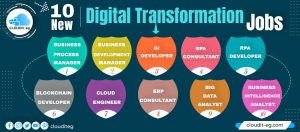Digital Maturity Model (DMM), is a reference model for evaluating the transition of a company or an organization to digital.
The TM Forum, an international non-profit association of companies in the telecommunications and digital sector, has developed the first DMM maturity model.
TM Forum’s DMM Digital Maturity Model
Maturity stages
The digital maturity model includes 5 stages:
- Seeding: Some operations start a digital transition.
- Emerging Stage: all operations are starting to integrate digital on a daily basis.
- Operational Stage: the objectives and planning of the organization integrate digital.
- Advanced Stage: new innovative ideas are implemented to expand digital capabilities.
- Dominant Stage: digital is perfectly mastered and the organization has a leading position in the field.
Dimensions and metrics
The model identifies 6 areas relevant to maturity:
1. Customer
Digital maturity measures your ability to understand and interact with your customers through the intelligent use of data.
More generally, it is about putting in place the infrastructure, business processes, and services that will allow your customers to benefit from an optimal and personalized experience. This proximity and this in-depth knowledge of your customers allow, in the long term, the development of new offers specifically adapted to their needs. And beyond that a significant optimization of your commercial results.
2. Strategy
This step consists of analyzing the way in which your offer meets the needs of your customers. And how you will perpetuate your business. It also assesses the good adequacy of the organization of your value chain with the digital transformation, in place or to come, of your market.
3. Technology
Who says digitalization says technology! The success of a digital-based development strategy is closely linked to the right choice and the efficiency of the technologies deployed. Being able to create, store, secure, reprocess, measure, and exchange data to meet the needs of its customers, employees, and suppliers at a lower cost is a major lever for growth.
You still have to know how to select the right technological solution from the multitude of possibilities available to you. In absolute terms, there is no right or wrong technological solution, but in your particular case, there is a solution that suits you perfectly and the others. The diagnosis will identify the first technical requirements to meet for ensuring the proper integration of future solutions within your company.
4. Operations
This is about knowing how to improve the efficiency of your operational teams using digital technologies. In other words, the question to ask is:
“How could digital improve the business processes of my company and thus allow me to gain in productivity while offering my teams better working comfort?”
5. Culture, People, and Organization
The digitization of a company brings about a profound change of mind. Both on the part of the management of the company and of its employees. Contrary to what one might think, the biggest variable in the success of a digital transformation project does not rest on the technological solution to be deployed. But, on the men who constitute each company – made up of managers and employees having each their personalities, habits, and feelings.
A digital transformation necessarily implies a change in the working method, communication, and managerial practices. It is therefore important to measure whether the corporate culture and the people who make it up are favorable or not to change. In order to ensure that the human factor does not hamper transformation.
6. Data
Evaluates the organization’s ability both strategically and operationally to ethically and effectively use data and information assets to maximize business value.




